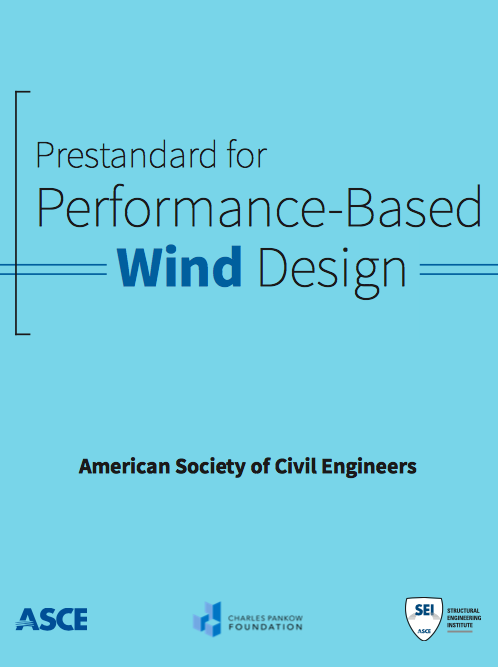News
CPP advances industry with leading role in PBWD publication
Now-available prestandard promotes performance-based wind design
While performance-based design (PBD) is rapidly growing in acceptance in the seismic field, no guidance has, until now, been available for application within the field of wind engineering. Many believe that if a building is designed using the provisions of the building code, it will survive all wind events and remain operational. However, this ignores the code limitations, more wholistic performance objectives, and the performance of materials stressed beyond the linear elastic range.
 Performance-based Wind Design (PBWD) is a sophisticated engineering approach that relies on advanced analytic and design methods. Using it, engineers can reliably predict behavior of a structure subjected to any defined loads, whether wind, seismic, or fire.
Performance-based Wind Design (PBWD) is a sophisticated engineering approach that relies on advanced analytic and design methods. Using it, engineers can reliably predict behavior of a structure subjected to any defined loads, whether wind, seismic, or fire.
Toward further industry adoption of PBWD, 14 industry experts came together to write Prestandard for Performance-Based Wind Design, the first document ever produced to aid in PBWD. One such structural expert was CPP’s Dr. Roy Denoon, Ph.D., M.ASCE, an industry-leading specialist in wind engineering for tall buildings.
“This publication is a huge step forward for structural engineers working to improve the efficiency, reliability, and resilience of buildings through performance-based wind design,” said Denoon. “This is a first step to defining approaches that need to follow in order to demonstrate compliance with clearly defined performance objectives. It also lays a framework for research areas to allow more mainstream adoption.”
The prestandard aids in resolving conflicts in performance objectives that exist when using prescriptive procedures for the wind design, and performance-based procedures for the seismic design. The prestandard describes three possible methods to implement different levels of PBWD, each varying in complexity and rigor.
Properly applied, the document will result in buildings capable of reliably achieving the wind performance objectives specified by the Minimum Design Loads and Associated Criteria for Buildings and Other Structures (ASCE/SEI 7), the nationally adopted standard. “This is a first step,” said Denoon, “towards the next generation of wind engineering and building design.”
The ASCE/SEI Prestandard for Performance-Based Wind Design is now available as a free download here from the ASCE Library.
